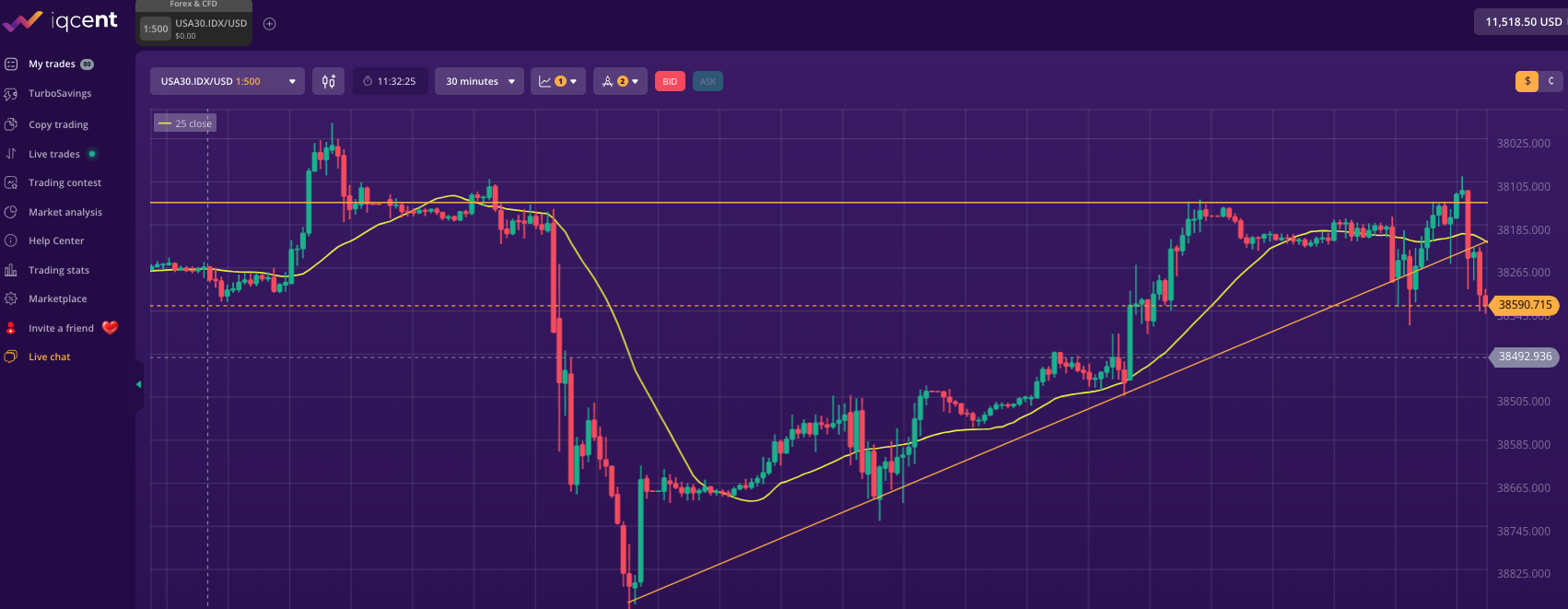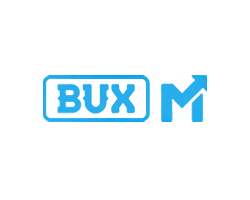Trading Indices Strategies
| Position | Company Logo | Information | Bonuses | Min. Dep | Regulation | Open an account |
|---|---|---|---|---|---|---|
 |
|
|
Minimum Deposit: $20 |  |
||
 |
|
|
Minimum Deposit: $250 |  |
||
 |
|
|
Minimum Deposit: $250 |  |
||
|
4
|
|
|
Minimum Deposit: $250 |  |
||
|
5
|
|
|
Minimum Deposit: $100 |  |
||
|
6
|
|
No deposit bonus | Minimum Deposit: $5 |  |
||
|
7
|
 |
|
No deposit bonus | Minimum Deposit: $10 |  |
|
|
8
|
|
|
Minimum Deposit: $250 |  |
||
|
9
|
|
No deposit bonus | Minimum Deposit: $250 |  |
||
|
10
|
|
|
No deposit bonus | Minimum Deposit: $100 |  |
|
|
11
|
|
No deposit bonus | Minimum Deposit: $10 |  |
||
|
12
|
|
|
No deposit bonus | Minimum Deposit: $25 |  |
|
|
13
|
|
|
No deposit bonus | Minimum Deposit: $100 |  |
|
|
14
|
|
No deposit bonus | Minimum Deposit: $10 |  |
||
|
15
|
|
|
No deposit bonus | Minimum Deposit: $10 |  |
|
|
16
|
|
|
No deposit bonus | Minimum Deposit: $2 |  |
|
|
17
|
|
|
No deposit bonus | Minimum Deposit: $500 |  |
Indices, also known as indexes, are baskets of stocks that are used to track sections of a stock market or an economy. Some of the most popular stock market indices include the S&P 500, the Dow Jones Industrial Average, the Nikkei 225, and the FTSE 100. Indices trading has become extremely popular amongst traders because it provides exposure to entire markets with just one asset.
In this comprehensive guide, we will cover everything you need to know about trading indices profitably.
What are Indices?
An index tracks the performance of a grouping of stocks that have something in common. For example, the S&P 500 tracks the stocks of 500 large US companies. The FTSE 100 tracks the 100 largest companies on the London Stock Exchange. An index provides a snapshot of a market or sector and gives traders broad exposure with one single asset.
The value of an index is derived from the prices of its component stocks. If the share prices of the underlying stocks in an index rise, the index level will increase accordingly. And if the stock prices decline, the index will also drop.
What is the Indices Market?
The indices market refers to the financial market where stock market indices are traded. Traders can speculate on the price direction of major indices like the S&P 500, FTSE 100 and DAX 30 through financial instruments like futures, options, CFDs, and spread betting.
Indices trading provides traders with easy access to entire stock markets in just one trade. It eliminates the need to select individual stocks to trade. You simply choose the index you want exposure to. The indices market offers opportunities for both short-term day traders and long-term investors.
How Does Index Trading Work?
There are two main ways traders get exposure to indices – exchange-traded funds (ETFs) and derivatives like CFDs or binary options.
ETFs are funds that track the value of an underlying index. When you buy shares in an ETF, you gain exposure to the index it tracks. ETFs trade similarly to stocks but provide diversified exposure like an index fund.
Derivatives like contracts for difference (CFDs) and spread bets also allow traders to speculate directly on indices. CFD trading has soared in popularity due to its flexibility. With CFDs, you can go long or short to profit from rising and falling markets. You can also access global indices and trade with leverage.
An Example of Index CFD Trading
Let’s go through a step-by-step example of trading the Wall Street index, the US 30, using CFDs on the IQCent trading platform.

Analyze the US30 Chart
The first thing we will do is analyze the chart to decide which direction we think the US 30 will move next. We will use technical analysis to look at price action patterns and indicators that signal potential opportunities.
On the IQCent platform, we pull up a daily chart of the US 30 index. Looking at recent price action, we notice the index has formed a bearish chart pattern known as a head and shoulders top. This suggests growing momentum for a downside move. We also spot key support around the 29,800 level, representing the “neckline” of the pattern.
If prices break below support at 29,800 decisively, it would confirm the head and shoulders pattern and likely lead to further selling. Monitoring this support zone closely forms the basis of our trading plan.
Determine Position Size and Stop Loss
Now that we’ve conducted analysis and identified a potential trade trigger, the next step is to determine our position size and stop loss level. As a beginner trader, we will risk 1% of our total account size per trade. Given we have $10,000, we will risk $100 on this US 30 trade.
We set our stop loss 40 points above the support level, at 29,840. This equates to risking approximately $100 if we enter a full 1 lot position size, in line with our 1% risk target.
Define Entry Trigger and Trade Execution
Our entry trigger occurs if the Dow closes below the neckline support after regular trading hours. A daily close below 29,800 gives a strong signal that sellers have overwhelmed buyers. If this occurs, we will enter short the next day at market open.
The following day, the Dow drops sharply, slicing straight through support at 29,800 early in the session. We execute our trade as planned, entering short at the prevailing market price of 29,790. Our stop loss sits at 29,840, risking $100 as intended.
Set Profit Target and Trade Management
We set a profit target at the prior swing low around 29,500. Hitting our target would result in a gain of around 290 points or $100 in dollar terms given our position sizing. This gives us a favorable 3:1 risk to reward ratio on the trade.
In the following days, the Dow continues falling as expected after the breakdown. We close out half our position at 29,600 to lock in partial profits. The index eventually bottoms out around our original profit target, reaching 29,500. We exit the remainder here for a nice gain, while keeping losses strictly limited based on our predefined stop.
What’s the Best Time to Trade Indices?
The best times to day trade indices are during the main market opens in London, New York, and Australia. Indices see increased volatility during these active sessions. Key times are:
- 8 AM – 12 PM GMT – London/Europe open
- 8:30 AM – 5 PM EST – New York open
- 7 AM – 4 PM AEDT – Sydney/Australia open
The first 1-2 hours when a major index opens usually sees the highest range and trading opportunities. Scheduled news events like economic data releases, central bank meetings, and company earnings can also spark volatility.
Advantages of Index Trading
There are several notable benefits of trading indices instead of stocks:
- Diversification: Indices provide exposure to an entire marketplace, reducing concentration in individual names. Losses in some stocks could be offset by gains in others.
- Simplicity: Tracking an index is easier than trying to select winning stocks. Indices also smooth out daily volatility.
- Low Costs: The expense ratios of index ETFs are extremely cheap compared to actively managed funds. Trading fees are also lower relative to other assets.
- Liquidity: Indices are amongst the most liquid markets, allowing seamless order execution.
- Leverage: Using leveraged derivatives like CFDs allows you to magnify potential gains from index moves.
Best Indices Trading Strategies
Now let’s explore some profitable indices trading strategies:
Trend Following
One of the most basic yet effective approaches is trend trading. The key is identifying an uptrend or downtrend using analysis tools like moving averages. Simple indicators like the 20 and 50-day moving averages work well to define trend direction on indices. For example, when the US500 enters a strong uptrend evidenced by its 20-day exponential moving average (EMA) crossing above its 50-day EMA, long trades would thrive. Each test of the rising 20-day EMA presents a low risk area to enter bullish swing trades targeting fresh highs.
Likewise, when the UK100 shows signs of peaking after a long uptrend (bearish divergence, double top patterns, peak momentum), short positions around areas of potential resistance allow downside momentum capture. Stops on trend trades sit beyond preceding swing points. Letting winners run is key while strictly limiting losses enhances profitability.
Support & Resistance
Watching key support and resistance levels on indices can pinpoint optimal trade entry and exit points. Former resistance levels tend to flip into support once broken. And old supports often become resistances. Traders buy bounces from support in uptrends or sell rallies into resistance during downtrends. Index levels that have rejected prices multiple times have added significance.
Let’s say the US30 bounces multiple times off the 25,000 figures, it clues savvy traders to buy the next test anticipating more upside momentum. The opposite rings true up near 26,000 resistance – tests of this area to sell into become high probability short trades.
Pattern Trading
Indices form reliable chart patterns like triangles, flags and wedges. These patterns signal likely breakout direction that traders can capitalize on. Index patterns also provide defined risk/reward profit targets. Traders simply reference recent swing highs or lows to set stop losses and take profit levels.
Combining pattern analysis with breakout/breakdown mechanics provides a statistics-based approach to index trading. Protective stops entered on pattern entry lie outside formations with wider targets projected based on pattern measurements.
Range Trading
When major indices like the US30, US500 or UK100 trade sideways in rangebound markets, directional trend following strategies tend to underperform. Instead, traders can use range trading instruments to generate income from the index bouncing between range highs and lows.
For example, if the US500 fluctuates between 3,800 and 4,000 for several weeks, high/low range binaries allow traders to capture payouts each time the index hits extremes. One strategy involves scaling out partial profits near halfway points then trailing a stop on the remainder to maximize range captures before reversals occur.
Conclusion
Indices provide simplified access to entire stock markets in single assets. By using analysis techniques tailored to indices and defining stop losses, retail traders can profit whether markets rise or fall. Our recommended brokers like IQCent, Videforex, Smartytrade, Binarycent and Raceoption allow trading major global indices 24/7 with top-tier leverage up to 1:500 and fast withdrawals.
FAQs
What are the major benefits of trading indices?
Indices provide diversified exposure, simplicity, liquidity and the ability to profit whether markets rise or fall. Leverage allows magnified profits from index moves.
What markets can you trade index CFDs?
Most global stock indices like S&P 500, FTSE 100, DAX 30, CAC 40, Hang Seng and Nikkei 225 offer index CFD trading. Cryptocurrency indices are also gaining popularity.
What trading style works best for indices?
Trend following strategies tend to work well for indices. Identifying dominant trends using moving averages and trading in the trend direction is a common approach.
Is index trading risky?
All trading carries risks but losses can be capped by utilizing stop losses. Trading indices rather than individual stocks also reduces risk through diversification















